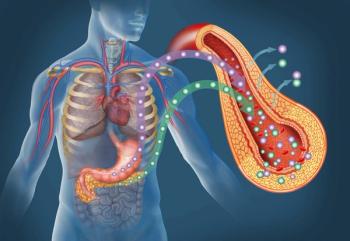
Stage 3A Non-Small Cell Lung Cancer Patients Not Receiving Proper Care
Quality measures for the management of NSCLC patients are only received by 13% of all eligible patients.
Researchers in a recent study have found that survival rates of patients with stage 3A non-small cell lung cancer (NSCLC) increased as patients receive more quality measures, but only approximately 13% of patients received all 4 quality measures.
The 4 quality measures are: neoadjuvant multiagent chemotherapy, lobar or greater resection, sampling of at least 10 lymph nodes, and R0 resection, according to the study presented at the 96th AATS Annual Meeting. Guidelines from the National Comprehensive Cancer Network (NCCN) and American College of Chest Physicians (ACCP) recommend that operable stage 3A NSCLC patients receive induction chemotherapy followed by resection if there is no progression of the disease.
The researchers analyzed data from the National Cancer Data Base (NCDB) and found survival rates increased 3-fold in patients with stage 3A NSCLC who underwent surgery and received 4 quality measures. Researchers also found that out of 8000 eligible patients, just 12.8% received all 4 quality measures.
"Compliance with national recommendations regarding induction therapy and approach to surgical resection are crucial to optimizing long-term survival outcomes in clinical Stage IIIA NSCLC," said lead author Pamela Samson, MD, MPHS.
Data suggests there is an increased benefit when more quality measures are included.
Overall median survival increased to 25 months for patients receiving 1 quality measure, 31.4 months for patients receiving 2 quality measures, 36.6 months for patients receiving 3 quality measures, and 43.5 months for patients receiving all 4. Patients who received no quality measures had a median overall survival of 12.7 months, according to the study.
Researchers found that 10,304 patients with clinical stage 3A NSCLC underwent surgical resection, and 30% of those patients did not receive neoadjuvant multiagent chemotherapy. Only about 40% of patients had at least 10 lymph nodes sampled.
Approximately 84% of patients received a lobectomy or greater resection, and 87% of patients had negative surgical margins.
Researchers discovered that insurance status (private or Medicare), higher education, and cancer care at an academic cancer or high-volume surgical center were variables that increased the likelihood of receiving the quality measures, according to the study.
Older, non-Caucasian patients with multiple comorbidities were more likely to not receive as many interventions.
"This analysis demonstrated that the majority of clinical Stage IIIA NSCLC patients are not receiving multiagent induction chemotherapy prior to resection. This is surprising, given the fact that the majority of patients in this study (80%) presented with clinical N2 disease," Dr. Samson said. “This underscores the need for evaluation of the clinical Stage IIIA NSCLC patient by a multi-disciplinary group."
Researchers hope their findings will encourage institutions to take a look at their compliance to quality measures.
“While this study demonstrated that achieving these selected quality measures, both individually and collectively, was associated with improved overall survival, it also revealed that patient, institutional, and tumor factors independently influence whether patients receive these key quality measures,” researchers concluded.
Newsletter
Stay informed on drug updates, treatment guidelines, and pharmacy practice trends—subscribe to Pharmacy Times for weekly clinical insights.














































































































































































































